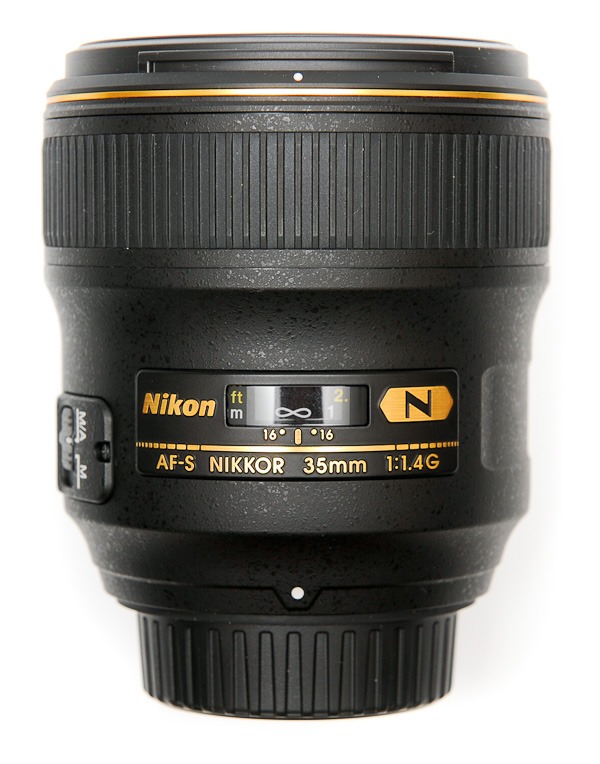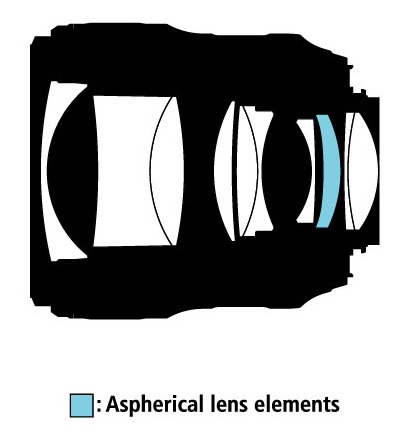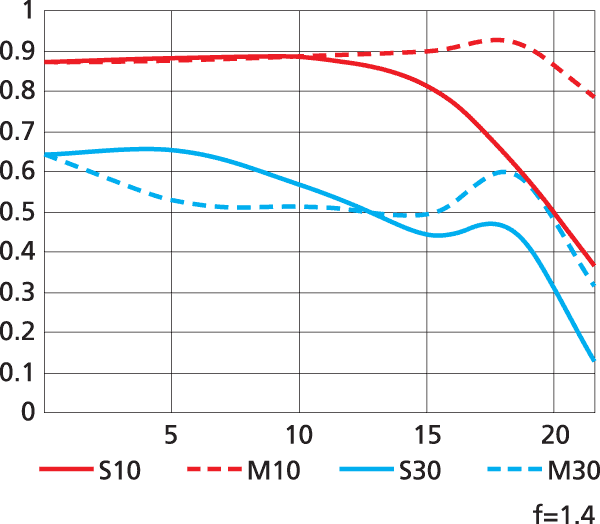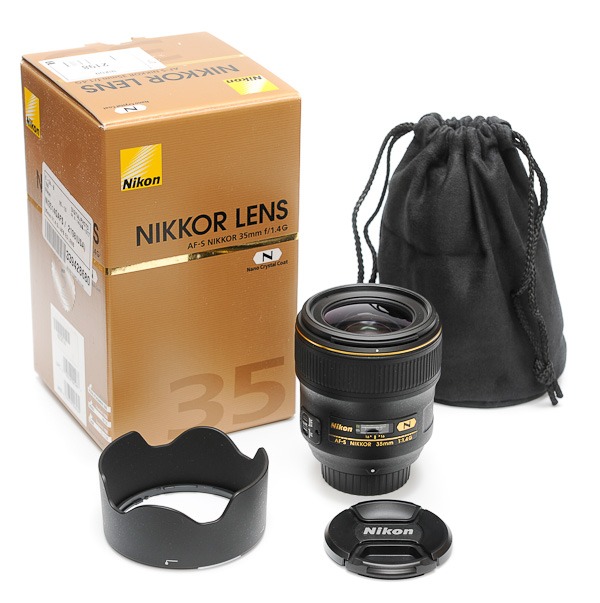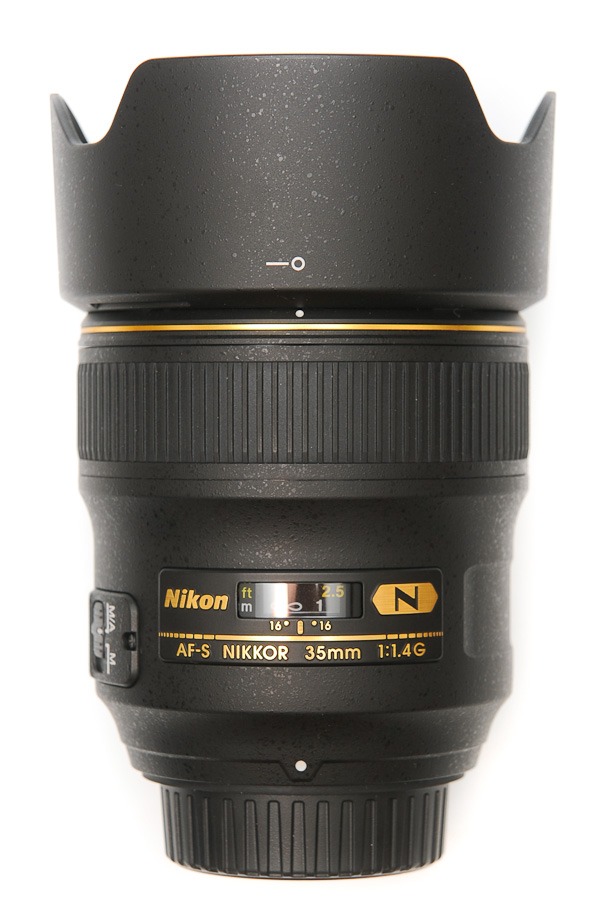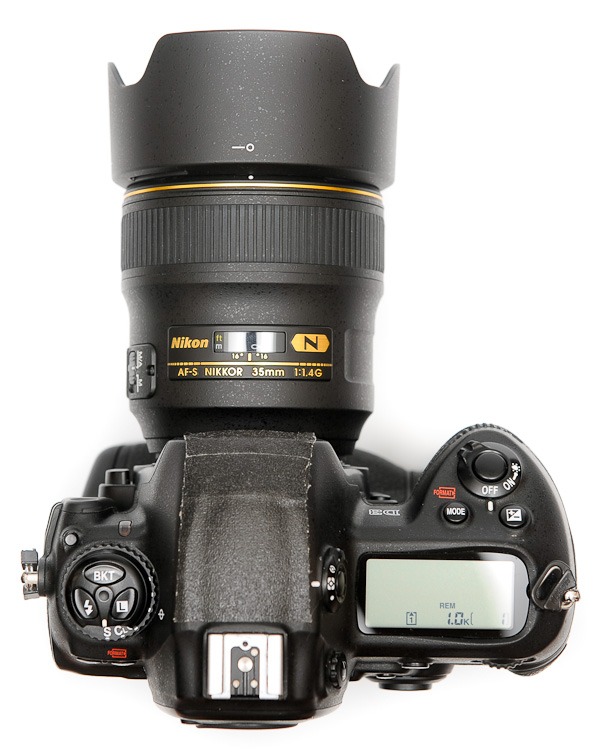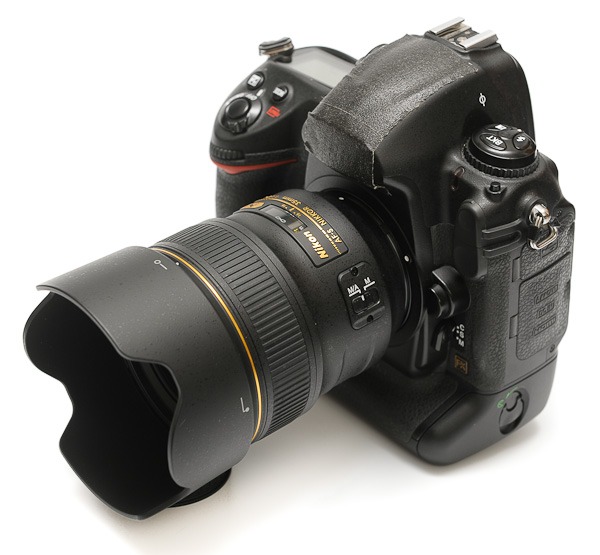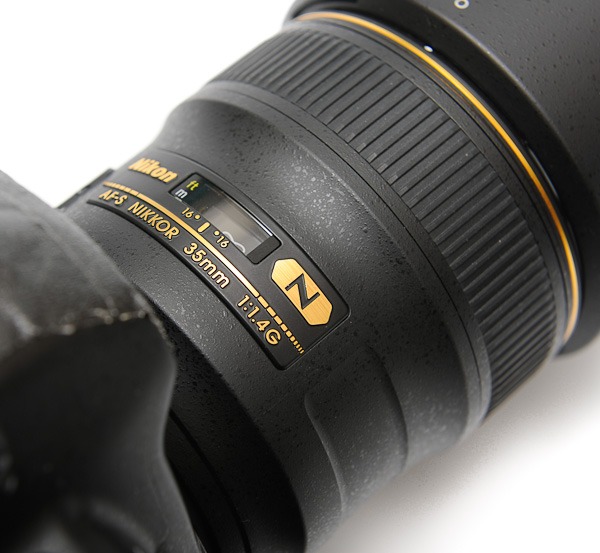The latest addition to Nikon's stable of fast primes, the Nikon 35mm f/1.4G AF-S offers Nikon users a classic focal length with all the cutting-edge features we've come to expect.
With a big price tag, the question with the 35mm f/1.4G is whether it has the performance to match. We've put this fast prime through its paces for the answer.
Support These Reviews
If you find this review helpful, please consider buying your next photo gear purchase from B&H,Amazon.com, or any of my other my affiliate links.
To learn how you can help support www.ishootshows.com, visit the page Buy Yourself Something Nice. Now with that out of the way, let’s get to the review.
Key Features
Here's what Nikon thinks are the key features of the lens. For me, the big take-away features are that it's a fast, pro-grade 35mm f/1.4 lens that autofocuses. While the AF bit isn't that amazing, it's something that's been sorely lacking in the Nikon system for years and which Nikon is only now finally addressing.
FX-format, ultra-fast classic wide-angle lens: Update of one of Nikon’s most respected NIKKOR lenses; suitable for landscapes, night scenes, interiors, weddings, photojournalism and astrophotography.
Optimized for edge to edge sharpness on both FX and DX-format D-SLRs: DX-format D-SLR the angle of view is equivalent to a focal length of 52.5mm in FX/35mm format.
Rear Focus (RF): Provides smooth and fast autofocus while eliminating front barrel rotation and lens length changes.
Exclusive Nikon Silent Wave Motor (SWM): Enables fast, accurate and quiet autofocus.
Rounded 9-Blade Diaphragm: Renders a more natural appearance to out-of-focus image elements.
Nano Crystal Coat: Use of Nano Crystal Coat further reduces ghosting and interior flare across a wide range of wavelengths for even greater image clarity.
Aspherical Lens Element: Aspherical lens element virtually eliminates coma and other types of aberration, even when shooting at the widest available aperture.
M/A Focus Mode Switch: Enables quick changes between manual and autofocus operation now enhanced with a refined MF driving mechanism to reduces focus time lag and improve ease of use in M/A mode.
Nikon Super Integrated Coating (SIC): Enhances light transmission efficiency and offers superior color consistency and reduced flare.
Optical Design & MTF Chart
The optical design of the new 35mm is relatively compact and with a minimum of fuss – just a single aspherical lens element in the rear assembly to help correct for optical aberrations at wide apertures.
From Nikon's MTF chart for the Nikon 35mm f/1.4G AF-S, we see some very good suggested performance. As always, MTF (Modulation Transfer Function) simply a kind of guideline for expected performance. MTF charts indicate performance of an optic at different spacial frequencies – at 10 lines per millimeter (red) and 30 lines per millimeter (blue). In the most basic terms, we can get an idea of contrast (red) and sharpness (blue), respectively.
What we see from this chart is that the 35mm f/1.4G should deliver very good sharpness in the center of the frame wide open, and excellent sharpness as well. Naturally, the corners of the frame show a dip in performance on a full-frame camera, but nothing out of the ordinary – and not where there's going to be important subject matter anyway when shot at f/1.4, either (assuming you're not shooting landscapes wide open with the expectation of edge-to-edge sharpness).
As always, these charts don't really get at the heart of image quality the way real samples can, so stay tuned for the real verdict on how this lens performs wide open. Hint: It won't surprise anyone.
What's In The Box
The Nikon 35mm f/1.4G ships with all the standard accessories for a fast Nikkor prime. No real surprises.
Design, Ergonomics & Controls
Ergonomically, the new 35mm f/1.4G fits right in with the Nikon 24mm f/1.4G and 85mm f/1.4G, with identical design cues. Personally, I love the look and feel of these lenses.
The barrel features a very slight taper toward the lens mount and a big focusing ring, which is very well damped for an AF lens. The focus ring is of a nice width, making operation quick and easy when you need it, but out of the way when you don't.
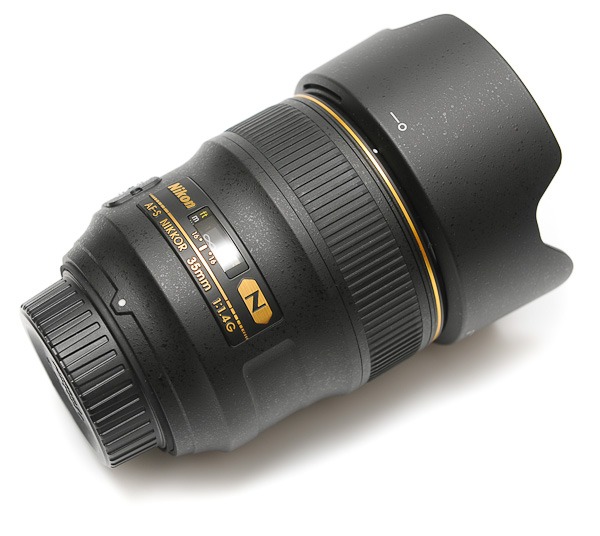
The one switch on the Nikon 35mm f/1.4G is the standard M/A -M switch to toggle between Autofocus with Manual override or Manual focus-only.
The one point where the 35mm differs from its 24mm and 85mm siblings is that it features a smaller 67mm filter size, instead of the larger and “pro standard” 77mm size. Not a huge issue, but one that might of concern when buying/using filters like a polarizer or the Singh-Ray Vari-ND filter.
Build Quality
The build quality of the new 35mm f/1.4 is heavy and solid, just like you want. Just like all of Nikon's professional, fast aperture primes (with the exception of the less expensive 50mm f/1.4G), the 35mm features a very solid feel in the hand.
The only minor points that can really be said about the lens are the inclusion of a plastic filter threads, but this might only be a concern for people constantly changing threads. For most users, who are either going to be shooting this lens naked or with a protective filter on at all times, this isn't an issue.
Lens Hood
The twist-on lens hood of the Nikon 35mm is compact and made of high density plastic. Like most of Nikon's recent lenses, the lens attaches with a bayonet system and secures by a tension lock. The throw on the bayonet lines are long enough and the lock secure enough that it's quite a tight fit – no worry about the hood being knocked off. Or to put it another way, if the hood does come off by accident, it's going to be because you've dropped your camera, at which point you have much bigger problems than a lost hood.
Lens Performance: AF Precision & Speed
I found the AF speed of the 35mm f/1.4 very good, though not quite as fast as the 24mm f/1.4G AF-S, which in my review I found to be exceptionally fast for a Nikon prime lens. It's roughly on par – and more likely slightly faster – than the focusing speed of the Nikon 85mm f/1.4G.
Precision is excellent on a well-tuned DSLR – which is a crucial point when using a fast prime like this. And to the point, I found the 35mm very “confident” in terms of AF performance, with no stuttering indecision that could plague Nikon's older AF-D primes. This point makes Nikon's breed of new fast primes even more usable wide open when AF performance is critical, and the 35mm f/1.4G is no exception here.
Lens Performance: Color & Contrast
In terms of contrast, the 35mm f/1.4G is beautiful. Even wide open, contrast is excellent – the lens delivers on what the MTF chart promises. Even with only a single aspherical element as the exotic element in this lens, the color and contrast wide open leave nothing to be desired. Throughout the aperture range, color and contrast are rich and natural.
Moreover, the lens handles backlit scenes beautifully. Even wide open at f/1.4, there's essentially no halation or veiling flare produced on backlit subjects, even with extreme overexposure in the background. This makes the lens especially well-suited for environmental portraiture and live music photography alike.
Lens Performance: Sharpness
The first impression of shooting the Nikon 35mm f/1.4 is that it's meant to be shot wide open. Sharpness here is very good and full of detail. Together with the high contrast, the Nikon 35mm f/1.4G AF-S is a lens that I can happily shoot wide open, all day.
Real world shooting confirms what the MTF charts suggest – that the 35mm delivers very well and evenly in the center of the frame. It's only at the corners that wide-open sharpness degrades.
In terms of sharpness, the 35mm f/1.4 seems close to the beautiful new 85mm f/1.4G for performance, with a slight edge over the wider 24mm f/1.4G in terms of evenness wide open.
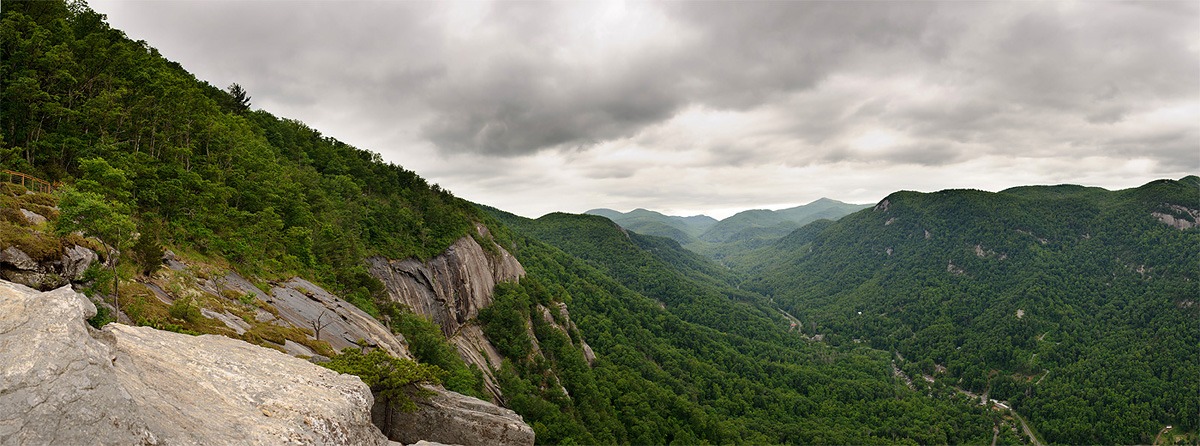
However, the 35mm f/1.4G isn't just a lens to use at wide apertures, of course. Stopped down to f/8, you get all the blistering, edge-to-edge sharpness you'd want for landscape work as well. Or in other words, the new Nikon 35mm f/1.4G is a lens you can shoot at essentially any aperture. Rest assured – it's going to deliver.
100% Crops
Here are three 100% crops from the above pano, which was shot at f/5.6 at ISO 200 on the Nikon D700.
When you consider the low contrast conditions, atmospheric haze, distance and the field of view, I find this sharpness excellent. There's tons of detail – arguably more than the modest 12-megapixels sensor of the D700 can handle. However, this is only at f/5.6 – as good as these samples appear, the 35mm f/1.4G delivers an even more crystalline image at f/8 across the frame. This is especially true in the corners of the frame, which by f/8 are sharp edge to edge on even a full-frame camera like the D3 or D700.
Long story short, the 35mm f/1.4 delivers wide-open sharpness as well as edge-to-edge sharpness for landscapes. Win-win.
Sample Images
As they say, talk is cheap. Here are some images made with the Nikon 35mm f/1.4G:
The 35mm Advantage
One final thing about this lens that shouldn't be overlooked is it's 35mm focal length, which has long been a standard of prime shooters since the introduction of the 35mm film format.
35mm is a little like the story of Goldilocks. It's a focal length that's not too wide and not too tight in terms of framing. In other words, it's often just right.
While 50mm on a full-frame 35mm sensor very well captures a naturalistic perspective compared to the human eye, a 35mm lens very well reproduces the field of view we see. As a result, framing with the 35mm focal length has a very comfortable feel to it and is immediately familiar. Moreover, it's just incredibly useful.
Summary
Even with a seemingly pedestrian optical design with “only” a single aspherical element, the Nikon 35mm f/1.4G is a lens that sings.
The 35mm f/1.4 is a lens that builds on the excellent performance of the Nikon 24mm, 50mm, and 85mm f/1.4G lenses and completes the lineup. For me, it's a do-it-all lens, with excellent sharpness wide open and edge-to-edge sharpness when stopped down. In addition, the lens delivers nice flare resistance, beautiful color and contrast, even wide open.
In short, it's everything you expect and want from a fast prime. The only downside is that with this great performance is a price tag to match.
Where To Buy – Recommended Retailers
If this review and other content on www.ishootshows.com was helpful to you, please consider supporting this site and purchasing your photo equipment any of the links in this review, my support page, or elsewhere on my site.
- Nikon 35mm f/1.4G AF-S at B&H Photo Video
- Nikon 35mm f/1.4G AF-S at Amazon.com
- Nikon 35mm f/1.4G AF-S at BorrowLenses.com
Buying through these affiliates really does help me bring you all the free articles, reviews, and tutorials on www.ishootshows.com.
If you do buy through B&H or any of my affiliate links, drop me a line! I’d love to hear about what you picked up. B&H is where I personally buy the vast majority of my gear, and I’m looking forward to bringing you more reviews thanks to their equipment loans.


